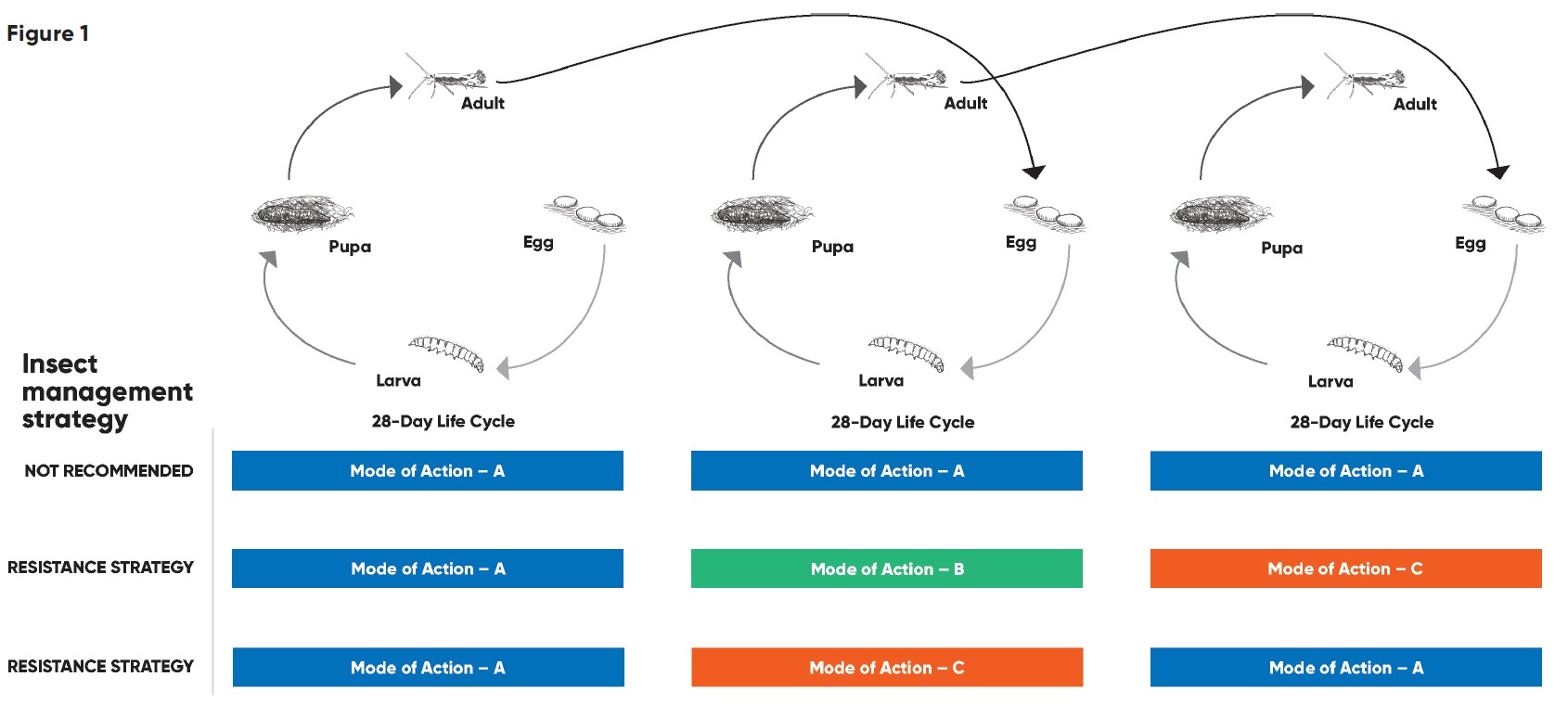Managing Against Insecticide Resistance

Some of the most significant agricultural developments of the last century have been technological: transgenic crops with bred-in resistance to insects, autonomous or automated equipment, and systems enabled by GPS with sub-inch accuracy. But other critical developments have been more attitudinal; among these is our deepening understanding of insect life cycles and physiology. It’s this understanding that led to the development of the framework we now call Integrated Pest Management (IPM). One of the chief goals of IPM: prevention of insecticide resistance.
Resistance occurs over time when various factors – biological, genetic or operational – increase pressure on a given insect population, resulting in reduced susceptibility to those factors among subsequent generations. Use too much of a specific insecticide, active ingredient or mode of action, and future insect generations can quickly develop resistance to that particular control measure. Greenhouses and other enclosed growing spaces are particularly susceptible due to their relatively constant environment, low beneficial insect or predator populations, and robust spray programs. But when used within a larger IPM program, insecticide resistance management (IRM) principles can help preserve and prolong the effectiveness of valuable insecticides.
One of the most effective and often-repeated recommendations for preventing insecticide resistance is avoiding the continual use of a single insecticide, active ingredient or mode of action; instead opting for an insecticide rotation or mixing products with multiple active ingredients (see Figure 1).

XXpire® insecticide from Corteva Agriscience, for example, uses two active ingredients with two different modes of action to control more than 39 common greenhouse and nursery pests, making XXpire insecticide an effective option for your IPM program.
That said, IRM isn’t exclusively about the choice of chemistry. Regular, aggressive scouting, identification of pest population or damage thresholds, a treatment window approach for multiple or overlapping insect generations, and applications targeting insects at the most vulnerable growth stage are equally important and can help boost the effectiveness of an overall insect control program.
In the last 10 to 15 years, several new classes of chemistry have been developed, each with different modes of action. These newer products are more selective toward targeted species and are more effective at specific developmental stages. As a result, it’s critical that nursery and greenhouse managers and their consultants understand the physiology of the targeted pests, the effects – desired and undesired – of their chosen insecticide or insecticide mix, and the downstream impacts of the various insecticide classes.
While insecticide mixtures can provide an increased spectrum and level of pest control, the individual products used should be chosen for their levels of efficacy against the specific targeted pests. Avoid combining products with similar modes of action in a mixture and choose products that minimize the risk of cross-resistance. And when possible, use products that have similar residual activity.
Sound resistance management practices can help prolong the effectiveness of insecticides and should be considered a shared responsibility among manufacturers, formulators, distributors, retailers, universities, governmental advisory bodies and growers. A programmatic approach to pest control should be part of everyone’s strategy when choosing insecticides and other control measures in greenhouses and nurseries.
Discover how the Corteva Agriscience Turf & Ornamental portfolio of products can help you protect and preserve what you grow while helping you maximize the labor you have.
With its rich heritage of Dow AgroSciences, DuPont and Pioneer that includes more than two centuries of scientific achievement, Corteva is committed to enriching lives with solutions that address the needs of producers and growers.
The best-in-class safety our products provide is backed by rigorous research and testing to ensure efficacy as well as plant health and safety.
XXpire® is not registered for sale or use in all states. Contact your state pesticide regulatory agency to determine if a product is registered for sale or use in your state. Always read and follow label directions.
When it comes to the challenges you face, you’re the expert. We’re here to help you tackle those challenges and bolster your business.
Effective weed control starts with identification. Learn to identify 90+ grassy and broadleaf weeds.